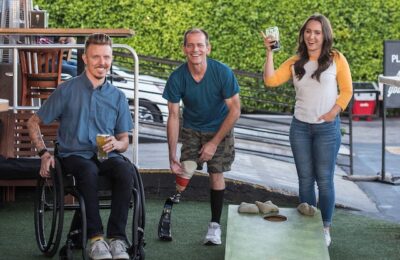For individuals living with disabilities, everyday tasks can become a challenge. Tasks that most people take for granted, such as getting dressed, moving around, or even communicating, can be difficult or impossible without the right tools and support. This is where disability aids come in. Disability aids are devices or equipment designed to assist individuals with disabilities in performing daily activities and improving their overall quality of life. In this article, we will discuss the benefits of disability aids and how they can improve accessibility and independence for people with disabilities.

Improving Mobility
One of the most significant benefits of disability aids is improved mobility. Mobility aids such as wheelchairs, walkers, and canes help individuals with mobility impairments to move around more easily and safely. With the right mobility aid, individuals can maintain their independence, perform daily activities, and participate in social and recreational activities.
Enhancing Communication
For individuals with speech and communication impairments, communication aids such as speech-generating devices or text-to-speech software can be life-changing. These aids can help individuals to express themselves more effectively and communicate with others, improving their social interactions and reducing feelings of isolation and loneliness.
Increasing Accessibility
Disability aids also help to increase accessibility for individuals with disabilities. Devices such as ramps, stairlifts, and grab bars make it easier for individuals with mobility impairments to access buildings and navigate their environments. By removing physical barriers, disability aids enable individuals to participate more fully in society, improving their quality of life and reducing feelings of exclusion.
Reducing Pain and Discomfort
Many disability aids are designed to reduce pain and discomfort associated with certain disabilities. For example, pressure relief cushions and positioning aids can help to reduce pressure points and prevent the development of pressure sores in individuals who spend extended periods in a seated position. Assistive devices such as eating and dressing aids can also help to reduce discomfort and make daily activities easier and less painful.
Improving Safety
Finally, disability aids can also improve safety for individuals with disabilities. Devices such as bed rails, shower seats, and bath lifts can help to prevent falls and other accidents, reducing the risk of injury and improving overall safety.
Customization and Personalization
Disability aids can be customized and personalized to meet the individual needs of each person with a disability. For example, mobility aids can be adjusted to fit the height and weight of the user, and communication aids can be tailored to match the individual’s communication style. This customization ensures that the device is not only effective but also comfortable and easy to use.
Independence
Disability aids can also help to promote independence for individuals with disabilities. By providing support and assistance with daily activities, disability aids enable individuals to perform tasks on their own, reducing the need for constant support from caregivers or family members. This independence can help to improve self-esteem and confidence, empowering individuals with disabilities to live more fulfilling lives.
Cost-Effective
Disability aids can also be cost-effective in the long run. While some devices may require an initial investment, they can ultimately save money by reducing the need for additional medical care or assistance. For example, a wheelchair may be a significant upfront cost, but it can ultimately save money by reducing the risk of falls or other injuries.
Conclusion
Disability aids are essential tools for individuals with disabilities, providing them with the support and assistance they need to perform daily activities and improve their quality of life. From improving mobility and communication to increasing accessibility, reducing pain and discomfort, and improving safety, disability aids offer numerous benefits that can help individuals with disabilities to live more independently and participate more fully in society. If you or someone you know is living with a disability, consider exploring the range of disability aids available to find the right tools and support for your needs.














